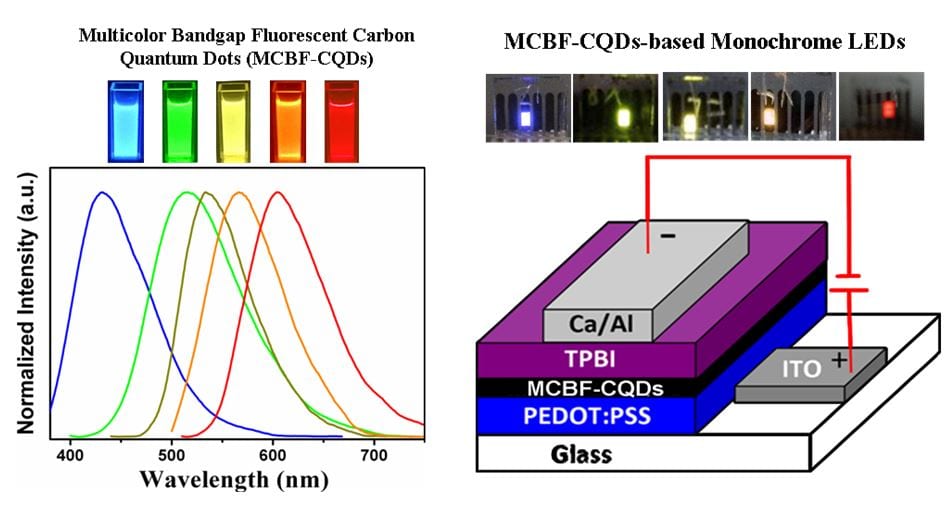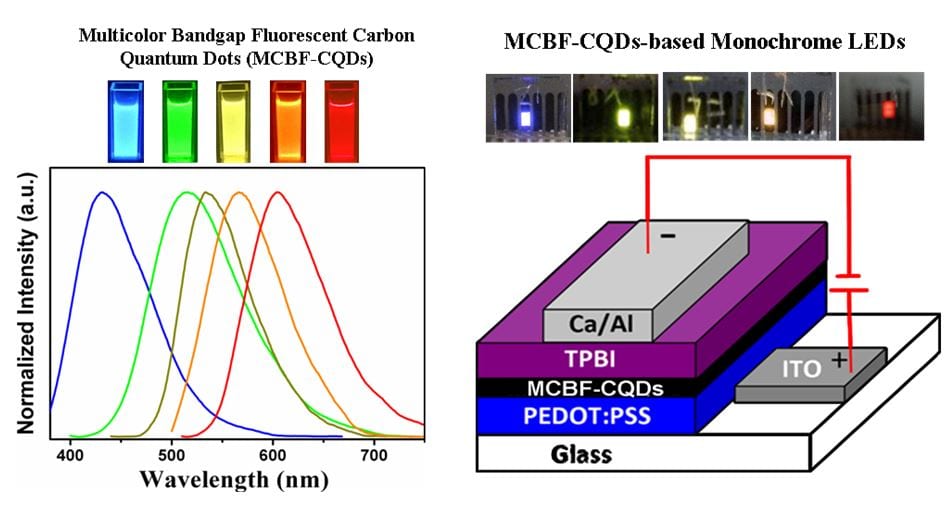Multicolored quantum-sized carbon dots (CDs) for electroluminescent light-emitting diode (LED) applications have been successfully synthesized, which are especially advantageous for being environmentally-friendly and inexpensive.
Significant research progress has been made in producing high-performance quantum dot-based LEDs (QD-based LEDs), both in design and fabrication; however, the toxic effects associated with the production of Cd2+/Pb2+-based QDs limits their use as next-generation luminophores. Therefore, the emergence of carbon quantum dots (CQDs) as an alternative is very important, because of their environmentally‑friendly production, tunable stable fluorescence emission and inexpensive fabrication.
The first synthesis and demonstration of multicolor bandgap fluorescent CQDs (MCBF-CQDs) has been reported. Whereby, researchers from Beijing Normal University with collaborators from the North China Electric Power University and the Hong Kong University of Science and Technology successful produced MCBF-CQDs with red to blue fluorescence. A quantum yield of 75% was achieved for blue fluorescence, and the solvothermal method employed to synthesis the MCBF-CQDs achieved yields of approximately 53%, making the process applicable for industrial-scale production.
The reported MCBF-CQDs possess distinctive optical properties, compared with previously reported CDs. Specifically, MCBF-CQDs show strong excitonic absorption bands, similar to quantum-confined semiconductor QDs. A further benefit is the efficient fluorescence emission, because there is only a small overlap of the excitonic absorption and emission bands, which minimizes self-absorption. Finally, white LEDs with a Commission International d’Eclairage (CIE) color coordinate at (0.30, 0.33) were also fabricated.

















